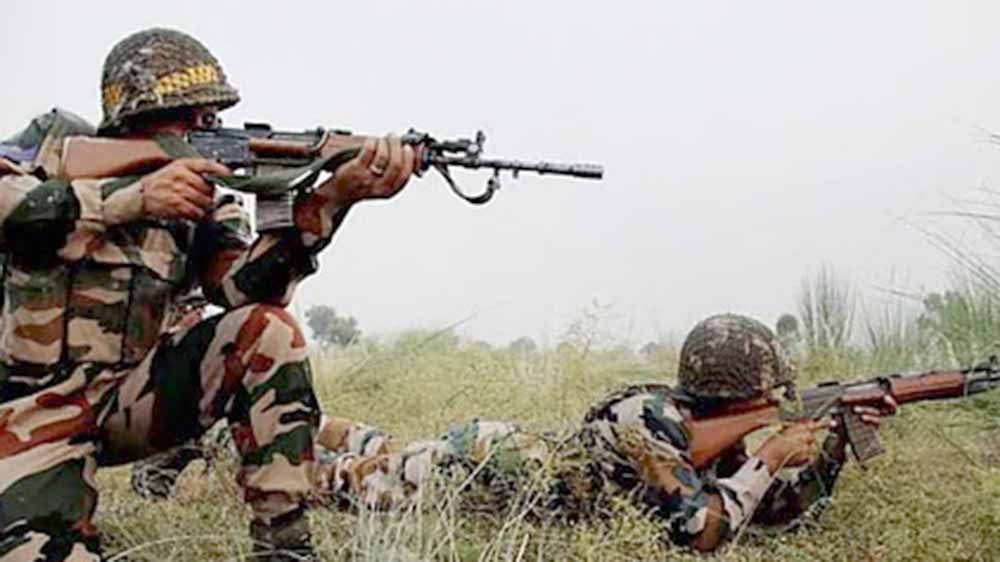Anticipating future warfare scenarios through “predictive technologies” and creating precise, targeted systems for counter-action are among the three-fold goals when it comes to India’s futuristic defence programme, Sudarshan Chakra Mission, the government said on Wednesday.
In a broad synopsis of the country’s security scenario, the Press Information Bureau (PIB) on Wednesday shared some data and a summary of various defence-related developments in the past 11 years, titled ‘Transformation of India’s Defence and Internal Security Posture’.
“Unlike in the past, India under the present government has become a global force to reckon with, a nation that speaks on issues from a position of strength,” it says. The government said India has adopted a “firm and clear approach towards cross-border terrorism”, adding that the pattern of action over the last decade reflects this policy.
The most recent and defining operation came in May 2025 with Operation Sindoor. In response to the killing of civilians in Pahalgam, “India gave its armed forces full freedom of action”, the synopsis says.
Using drones and precision munitions, they struck nine terrorist camps in Pakistan and Pakistan-occupied-Kashmir. More than 100 terrorists were eliminated, including individuals linked to the IC814 hijacking and the Pulwama attack. Pakistan attempted retaliatory strikes through drones and missiles, but Indian counter-drone systems neutralised them, it adds.
In his 79th Independence Day address, Prime Minister Narendra Modi described Operation Sindoor as “a new normal”, making it clear that “India will respond with full force whenever terrorism threatens its citizens,” the synopsis says.
Beyond immediate responses, the Modi government is preparing for “long-term threats,” the government said.
In his Independence Day speech, Modi had announced the Sudarshan Chakra Mission, a futuristic defence programme.
“Its goals are threefold — to ensure the entire system is researched, developed, and manufactured in India; to anticipate future warfare scenarios through predictive technologies; and to create precise, targeted systems for counter-action. By 2035, the aim is to provide a comprehensive national security shield for both strategic and civilian assets,” it says.
In the last eleven years, India’s defence and internal security posture under the government of PM Modi has undergone a “profound transformation”, it says. The shift has been marked by “greater clarity of purpose, stronger deterrence, and a sustained drive for self-reliance,” the synopsis says.
This government has consistently underlined that “national security is non-negotiable”, and to ensure this security, India will build its own capacity and preparedness. This has resulted in a “more confident, modern, and proactive approach to challenges, both external and internal”. it adds.
Firm responses to terrorism, the clear articulation of new normal with Pakistan and futuristic initiatives like the Sudarshan Chakra Mission underscore a “forward-looking security doctrine,” the government asserted.
India’s defence and internal security posture under the Modi government reflects a “decisive shift towards strength, clarity, and self-reliance”.
With record investments in defence, rapid growth in indigenous production, bold reforms, and the adoption of emerging technologies, India has transitioned from being a major importer to a rising global exporter of defence equipment, it added.
“India’s defence expenditure has steadily increased under the present government, rising from Rs 2.53 lakh crore in 2013–14 to Rs 6.81 lakh crore in 2025–26,” the PIB synopsis says.
“The focus is no longer only on acquiring weapons but also on building domestic capacity. In 2024–25, defence production touched a record Rs 1.50 lakh crore, more than triple the 2014–15 level,” it adds.
Fighter jets, missile systems, artillery systems, warships, naval vessels, aircraft carriers and a lot more are now being made in India, underlining how strongly “self-reliance and deterrence have become the cornerstone of national security,” the government said.
Defence exports grew thirty-four times over the last decade, reaching Rs 23,622 crore in 2024–25. Indian equipment is now exported to over 100 nations, including the United States, France, and Armenia, it said.
The synopsis also shared data related to indigenisation efforts.
The SRIJAN Portal (2020) enables the industry to locally develop items earlier imported. “To date, over 46,798 items have been listed”.
And, Positive Indigenisation Lists by DPSUs have identified 5,012 items (across five tranches), “signalling a phased ban on imports”, it says.
At the same time, progress in internal stability, food and energy security, financial inclusion, and technology innovation demonstrates that Atmanirbharta is “not confined to defence alone” but forms the foundation of a “resilient and confident India prepared to meet both traditional and non-traditional challenges on its path to becoming a global leader”, the government asserted.
“This tectonic shift reflects the deep resolve of the government to see the country as Viksit Bharat in every sense in the years to come. It also reaffirms that this government does not merely believe in rhetoric, but has actually done, and is continuing to do, what it takes to make India ‘Viksit’,” it said.
India will respond whenever terrorism threatens its citizens: Govt
NEW DELHI, AUG 20 (PTI)

